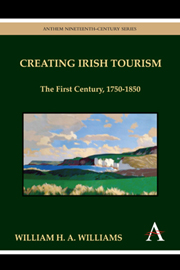Chapter 3 - Property, Class and Irish Tourism
from Part I
Published online by Cambridge University Press: 05 March 2012
Summary
Estate Tourism
According to Dean MacCannell, “sightseeing is a ritual performed to the differentiation of society.” Certainly, tourism in Great Britain and Ireland originated within the differentiation between the very top of society and all that lay beneath. On both islands pleasurable travel began with visits to the great estates. As early as the sixteenth century, improved roads and maps had encouraged the English to explore their own country. Not until the eighteenth century, however, did travelling for pleasure within Britain, the “Home Tour,” begin to emerge in its modern form. By then, a general curiosity regarding the next shire had given way to visiting the estates of the landed aristocracy.
Many of those estates dated to 1537 when Henry VIII dissolved the monasteries and vast amounts of property suddenly fell into the hands of the aristocracy in England and Ireland. In England the enthusiasm for building great country houses, begun during the Tudor and Stewart eras, continued through the eighteenth century, spurred on, in the case of the great Whig families at least, by their secure positions in the wake of the Glorious Revolution. The grandeur lavished on British estates went beyond private satisfaction. Power and status were on public display. Writing about the great English houses, Ian Ousby has affirmed that “attracting tourists has always been part of their function….” Even as picturesque scenery, antiquities and, for a time, mines and mills, became incorporated into the Home Tour, the country house remained an enduring tourist attraction in Britain for several centuries.
- Type
- Chapter
- Information
- Creating Irish TourismThe First Century, 1750–1850, pp. 49 - 66Publisher: Anthem PressPrint publication year: 2010



